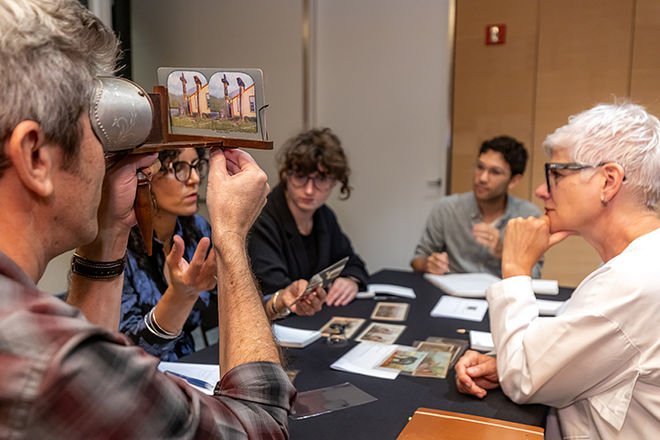Nancy S. Steinhardt presented at the Global Middle Ages Seminar on Wednesday, October 18, at 6 pm. Her talk was entitled “When Muslims Die in China.”
China had a multimillennial tradition of building tombs replete with burial goods before Islam came to China in the Tang dynasty (618–907). Muslim burial was by contrast modest: without grave goods, and if a tomb was marked, the sign was a simple stone or cenotaph. This talk investigates how practicing Muslims who died in China were buried. It begins with graves of merchants who were part of flourishing international communities in port cities during the Song dynasty (960–1279). These tombs are contrasted with a tomb argued to belong to the Buddhist convert to Islam in Guyuan, Hebei province, in 1307, during the period of Mongolian rule. Steinhardt then turns to tombs of two Muslim kings, from Borneo and the Philippines, who died in China in the early years of the fifteenth century. The strikingly different tombs are an opportunity to assess the convergence or lack of convergence of Chinese and Muslim practice as reflections of the political backdrop of three consecutive periods in Chinese history.
Nancy S. Steinhardt is Professor of East Asian Art and Curator of Chinese Art at the University of Pennsylvania. She was a Junior Fellow in the Society of Fellows at Harvard from 1978 to 1981. She is author or co-author of Chinese Traditional Architecture (1984), Chinese Imperial City Planning (1990), Liao Architecture (1997), Chinese Architecture (2003), Reader in Traditional Chinese Culture (2005), Chinese Architecture and the Beaux-Arts (2011), Chinese Architecture in an Age of Turmoil, 200–600 (2014), China’s Early Mosques (2015), Traditional Chinese Architecture: Twelve Lectures (2017), and more than 100 scholarly articles or essays. Chinese Architecture: A History and The Borders of Chinese Architecture are under contract. In 2014 Steinhardt gave the Reischauer Lectures at Harvard. She has received grants from the Guggenheim Foundation, Institute for Advanced Study, Center for Advanced Study in the Visual Arts, National Endowment for the Humanities, American Council of Learned Societies, Getty Foundation, Chiang Ching-kuo Foundation, Social Science Research Council, American Philosophical Society, Graham Foundation for Advanced Study in the Fine Arts (2), Van Berchem Foundation, Metropolitan Center for Far Eastern Art, American Numismatic Society, and Fulbright-Hays. She has given more than 350 public lectures or conference talks, and more than ten named lecture series including the Reischauer Lectures at Harvard in 2014. She is on six editorial boards.
Steinhardt has broad research interests in the art, architecture, and archaeology of China, Korea, Japan, and Mongolia from the second through fourteenth centuries. She has done fieldwork in all four countries. She has been an advisor, guest curator, or author for exhibitions at China Institute, Asia Society, the Metropolitan Museum, Japan Society, Chicago Art Institute, the Smart Museum, and the Penn Museum.











